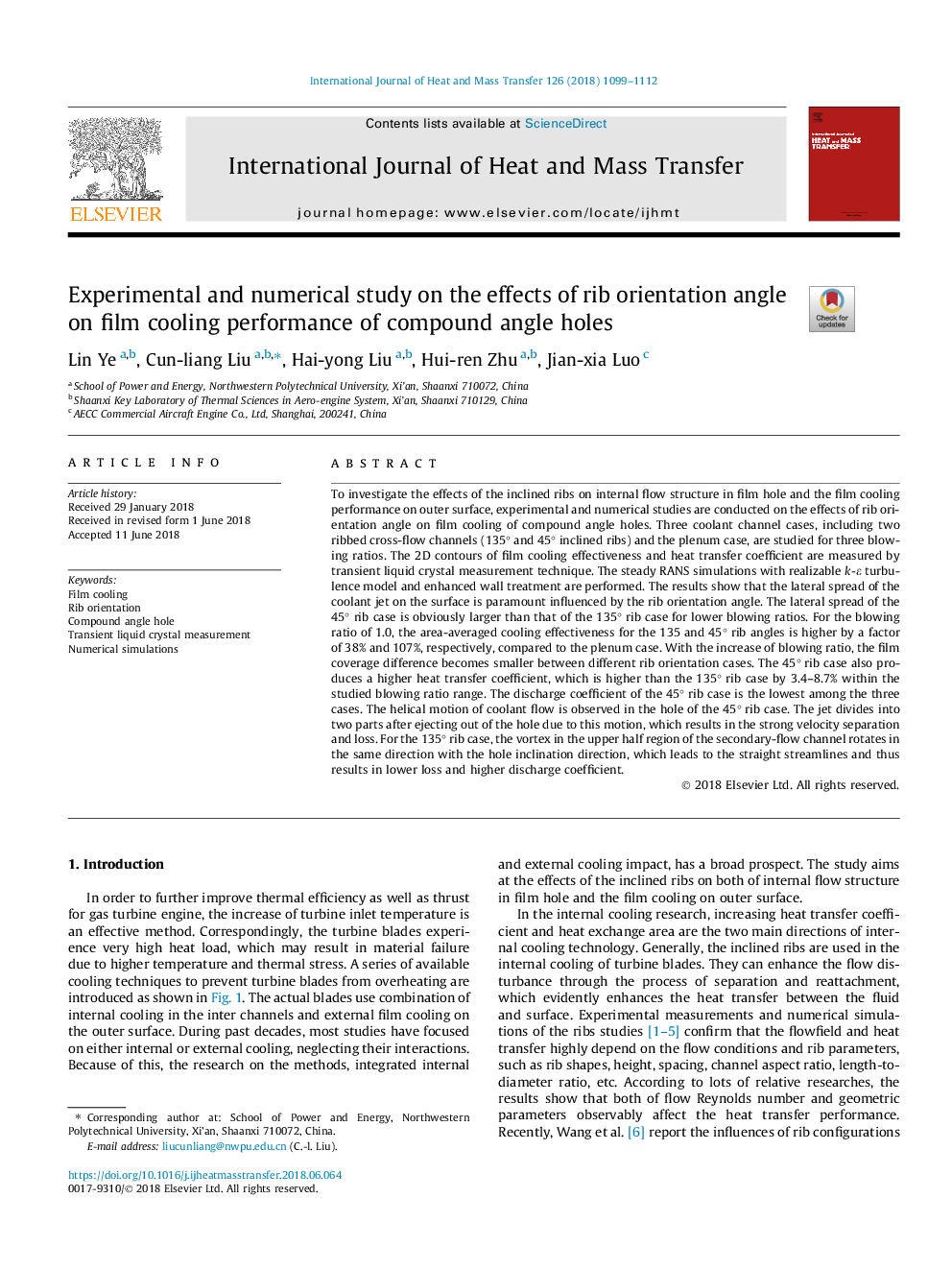| کد مقاله | کد نشریه | سال انتشار | مقاله انگلیسی | نسخه تمام متن |
|---|---|---|---|---|
| 7053936 | 1458013 | 2018 | 14 صفحه PDF | دانلود رایگان |
عنوان انگلیسی مقاله ISI
Experimental and numerical study on the effects of rib orientation angle on film cooling performance of compound angle holes
ترجمه فارسی عنوان
بررسی تجربی و عددی بر روی تاثیر زاویه جهت گیری بر روی عملکرد خنک کننده فیلم از سوراخ زاویه مرکزی
دانلود مقاله + سفارش ترجمه
دانلود مقاله ISI انگلیسی
رایگان برای ایرانیان
کلمات کلیدی
خنک کننده فیلم، جهت گیری قائم، سوراخ زاویه مرکزی، اندازه گیری کریستال مایع منتخب، شبیه سازی عددی،
موضوعات مرتبط
مهندسی و علوم پایه
مهندسی شیمی
جریان سیال و فرایندهای انتقال
چکیده انگلیسی
To investigate the effects of the inclined ribs on internal flow structure in film hole and the film cooling performance on outer surface, experimental and numerical studies are conducted on the effects of rib orientation angle on film cooling of compound angle holes. Three coolant channel cases, including two ribbed cross-flow channels (135° and 45° inclined ribs) and the plenum case, are studied for three blowing ratios. The 2D contours of film cooling effectiveness and heat transfer coefficient are measured by transient liquid crystal measurement technique. The steady RANS simulations with realizable k-ε turbulence model and enhanced wall treatment are performed. The results show that the lateral spread of the coolant jet on the surface is paramount influenced by the rib orientation angle. The lateral spread of the 45° rib case is obviously larger than that of the 135° rib case for lower blowing ratios. For the blowing ratio of 1.0, the area-averaged cooling effectiveness for the 135 and 45° rib angles is higher by a factor of 38% and 107%, respectively, compared to the plenum case. With the increase of blowing ratio, the film coverage difference becomes smaller between different rib orientation cases. The 45° rib case also produces a higher heat transfer coefficient, which is higher than the 135° rib case by 3.4-8.7% within the studied blowing ratio range. The discharge coefficient of the 45° rib case is the lowest among the three cases. The helical motion of coolant flow is observed in the hole of the 45° rib case. The jet divides into two parts after ejecting out of the hole due to this motion, which results in the strong velocity separation and loss. For the 135° rib case, the vortex in the upper half region of the secondary-flow channel rotates in the same direction with the hole inclination direction, which leads to the straight streamlines and thus results in lower loss and higher discharge coefficient.
ناشر
Database: Elsevier - ScienceDirect (ساینس دایرکت)
Journal: International Journal of Heat and Mass Transfer - Volume 126, Part B, November 2018, Pages 1099-1112
Journal: International Journal of Heat and Mass Transfer - Volume 126, Part B, November 2018, Pages 1099-1112
نویسندگان
Lin Ye, Cun-liang Liu, Hai-yong Liu, Hui-ren Zhu, Jian-xia Luo,
